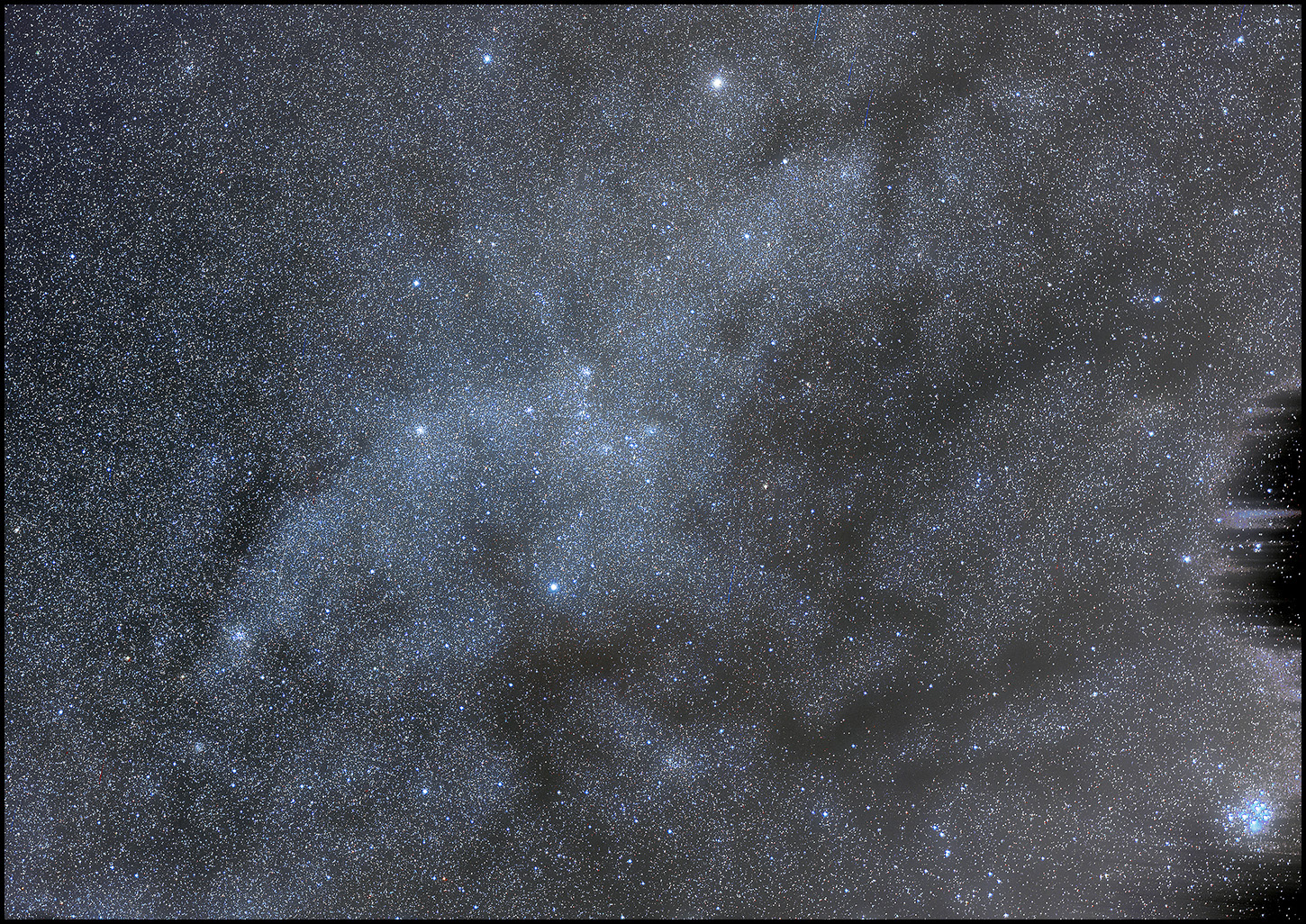| |
Dark Constellations
01/04/2022. Yes, we have no Quadrantids, no meteors from the discarded constellation of the Quadrant, but we do have the dark molecular clouds of Taurus and the bright stars and clusters of Auriga.
When I posted this on Facebook, one of my friends commented that she could see the shape of the bull. OK, fine, but most of the stars of Taurus are out of the frame at bottom. That said, the clouds do have a sort of bull-like shape, and I got to wondering if anyone way back in the used to be made constellations of the dark clouds in their pristine skies. Some did.
In western lingo, Aldebaran is the brightest star of the Hyades, a cluster in Taurus, and is just below this frame. Aldebaran was Chuchu Qoyllur ("Star going forward" or perhaps Chukchu Qoyllur "Star of Malaria") in the Inca sky. Nearby was the dark constellation Kuntur, "the condor." The dark clouds in that photo seem to match up nicely with that. I see a project coming on.
We have individual dark clouds mentioned here and there: the southern hemisphere's "Coalsack," "Barnard's Snake," the Great Rift through Cygnus, but really, that's about it. No charismatic animals, warriors, or bits of navigational or scientific equipment.

Dark Constellation / Taurus
25mm Zeiss, techbits to come.
In the meantime, go Big.
:: top ::
My deep-sky photos are made with a variety of sensors and optics. Deepest images come now from a ZWO ASI1600MM Cooled Pro CMOS camera, an ASIair (model 1) and sometimes one of several laptops. A good many images come from an unmodded Canon 6D but a lot more will be coming from an R6. Video and video extracts begin in a Canon EOS M, usually running in crop mode via Magic Lantern firmware (but the 6D and especially the R6 will probably see more use). Telescopes include an AT10RC, an Orion 10" F4 Newtonian, and a pair of apochromats: a TMB92SS and a AT65EDQ. A very early Astro-Physics 5" F6 gets some use, too. So do lots of camera lenses on both the ASI1600 and on the Canons. A solar Frankenscope made using a 90mm F10 Orion achromat and the etalon, relay optics, and focuser from a Lunt 60 feeding a small ZWO camera will see more action as the Sun comes back to life (Autostakkart!3 is my current fav for image stacking). Mounts include an iOpton SkyTracker (original model), a bargain LXD-55, a Losmandy G11 (492 Digital Drive), and an Astro-Physics Mach1. PixInsight does most of the heavy lifting; Photoshop polishes. Some of the toys are more or less permanently based in New Mexico. I desperately hope to get back soon.
|
